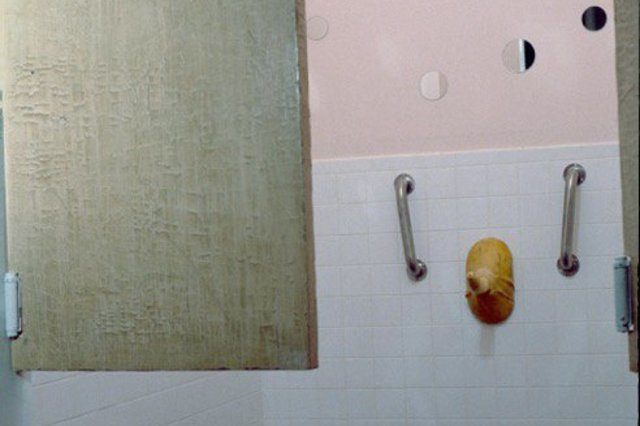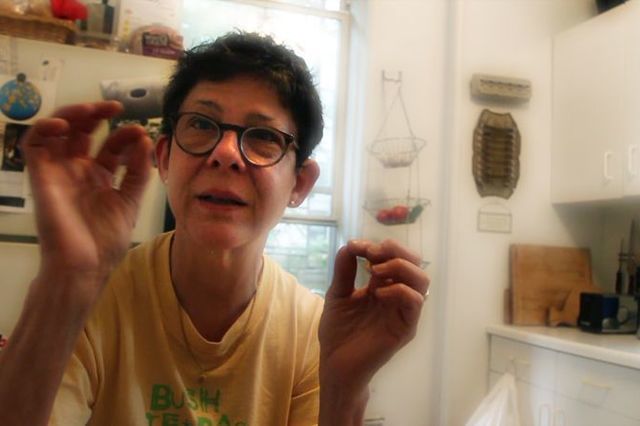Maria Elena González, a Cuban exile who came to artistic prominence during the radical queer identity movement of the 1990s, will be the featured artist at the 31st Ljubljana Biennial of Graphic Arts, opening on August 28th in Slovenia. González’s work stands outside of mainstream art world trends. Yet in spite of this her work has consistently garnered notice throughout the years. González was awarded the solo show as the grand prizewinner of the 2013 Biennial, and this dynamic setting is a perfect place for her work.
Among the other popular international exhibitions, the Ljubljana Biennial is one of the more experimental and daring expositions. Started in 1955, the same year as its better-known cousin “Documenta” in Germany, Ljubljana began with a curatorial focus on printed graphic works featuring artists from both sides of the iron curtain. Both exhibitions began during a time that sought to advance their nation’s cultural identities into the modern milieu, after the Second World War and during the Cold War, which ensued. Most graphic art from the Eastern Bloc were comprised of propaganda posters, so the biennial’s attempt to bring east and west together was a bold attempt to ameliorate tensions between the two sides. Today Ljubljana focuses on bringing minority voices to the fore of art world discourse, as well as expanding what “graphic arts” means beyond printed matter, which is exactly in line with González’s exhibition. She will be featuring works that not only bring our attention to environmental issues but also expands the notion of graphic arts into the sculptural and temporal through the use of sound.
González spent much of her early childhood in her aunt’s beauty parlor where she would collect the hair from the salon floor to create her own little art projects.
Apart from González’s early works that have a direct queer sensibility reflective of strident activism, her later works remain largely conceptual and environmental in nature, lending themselves to more open-ended interpretations. González surmises this is due in part to experiencing censorship as a child during the Cuban Revolution where literal representations could get you into trouble. Early into the Revolution the González family property had been seized by the government, forcing the family to immigrate to the U.S. arriving in Florida in the late 60s.
González spent much of her early childhood in her aunt’s beauty parlor where she would collect the hair from the salon floor to create her own little art projects. She often spent her days at the carpentry shop a few doors down making assemblages out of wood scraps. Her attempts at representation were thwarted when asked by her fifth grade teacher to produce art for the Revolution. González drew a picture of her aunt as she cried watching government soldiers confiscate her beauty salon. Her teacher promptly ripped up the drawing declaring, “This is not revolutionary art!” Needless to say that experience left an indelible mark of censorship on González.
González stopped producing art as a teenager but returned to it in high school and went on as an undergraduate at Florida International University where she received her BFA. González had her queer coming of age in San Francisco while earning her MA at SFSU(San Francisco State University). Later she moved to New York City during the highly charged ActUP years and produced a series of wry queer-dyke inspired works. Her biennial show “The Tree Talk Series” will feature an installation of graphic prints, drawings, video, and a laser cut replica of a forty foot roll of birch bark whose incised notes are recorded on a player-piano.
I had the opportunity to preview parts of “Tree Talk” in preparation for the exhibition at González’s home studio in Brooklyn. González had gone through some big changes in the last year, facing having to close up a studio in Switzerland where she had been living part-time, as well as moving out of her decades old Brooklyn workspace, due to the inevitable gentrification of her neighborhood. These upheavals have not slowed the artist down. And living in-between cities seems to be something that comes easily for González, who now splits her time between New York and San Francisco where she joined the faculty at the Art Institute last fall. González informed me that many of the pieces being sent to Ljubljana were completed during the school year while in San Francisco.
González showed me video as well as other materials, which will be featured in the upcoming exhibition. While the graphic works are dramatic iterations of images inspired by birch trees, the centerpiece of “Tree Talk” is the sound element. The score of birch bark music, as you may imagine, at first sounds dissonant and cacophonous. But as nature reveals herself, patterns (albeit somewhat irregular) start to emerge. Like the sound of roaring surf or thundershowers, nature’s music has a mesmerizing yet chaotic quality.
The bark in González’s current works were peeled from felled trees. She has become more circumspect about using wood in her works, more mindful of the exploitation of this natural resource.
The “Tree Talk Series” resonate in part with the late sound artist Conlon Nancarrow, whose works for the player piano were recently featured at the Whitney, González eventually did a series of drawings based on the perforated markings of his piano rolls. Then while on a teaching fellowship at Skowhegan, every morning González took her coffee at a contemplative spot in view of three birch trees. Soon González began “seeing” player piano scores on the thin black incisions on the bark. The view of her spot on campus, by the way, will also be shown as a projected installation on one of the gallery walls.
While González has remained predominately conceptual, working with environmental and architectural forms, she maintains social and political themes concealed within. The bark in González current works was peeled from felled trees. She has become more circumspect about using wood in her works, more mindful of the exploitation of this natural resource. As a viewer and listener of “Tree Talk” one is struck by the poetic life of trees, removed from what has become humanity’s utilitarian uses.
Thinking back to her experience as a 10-year-old, she said “those memories of censorship don’t go away.”
González’s exhibition at Ljubljana Biennial comes on the heels of many other accolades and foundation recognition that she has been awarded over the past decade including; The Bellagio residency, the Pollock-Krasner grant, the Rome Prize, and a Guggenheim. González looks forward to exhibiting in Cuba, perhaps to be included in the next Cuba Biennial. But in light of the detention of the artist Tania Bruguera this year, she has her reservations. Thinking back to her experience as a 10-year-old, she said “those memories of censorship don’t go away.”
“Tree Talk Series”
The 31st Ljubljana Biennial of Graphic Arts
Ljubljana, Slovenia
August 29 – November 1, 2015





